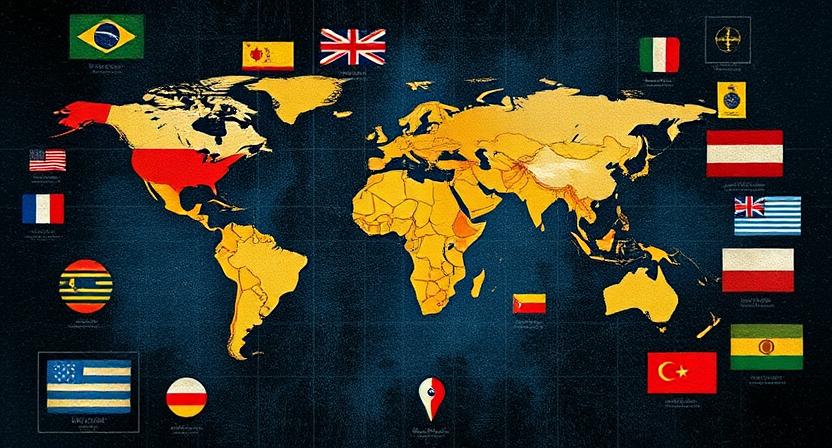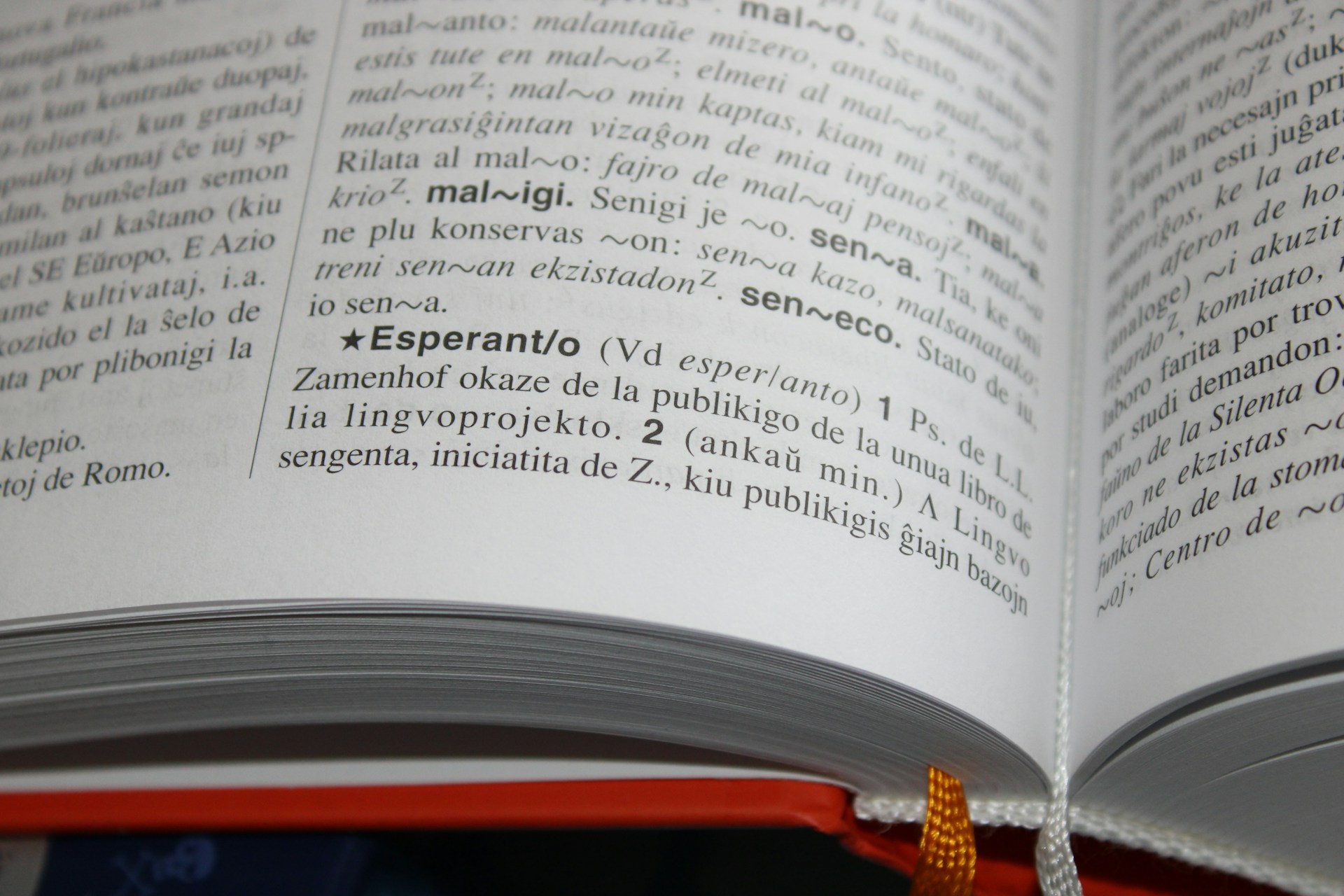How Languages Influence the Way We Think and Perceive the World

Languages as a Tool for Communication
Language serves as the bedrock of human communication, enabling individuals to convey thoughts, emotions, and ideas to others. Through the intricate web of words, gestures, and expressions, language acts as a bridge that connects us to one another, facilitating the exchange of information and facilitating social interactions. This tool transcends mere verbal exchanges, encompassing nuances of tone, body language, and cultural context that enrich the communication process.
Moreover, language serves as a medium for preserving collective knowledge and sharing stories across generations. By encoding experiences, beliefs, and values into linguistic structures, communities pass down their cultural heritage and traditions. Through the intricate interplay of dialects, idioms, and expressions, languages encapsulate the essence of diverse societies, offering a window into the rich tapestry of human experiences.
The Role of Language in Shaping Cultural Identity
Language plays a pivotal role in shaping cultural identity as it serves as a vessel for passing down traditions, beliefs, and values from one generation to the next. Through language, individuals are able to express their unique cultural heritage, reinforcing a sense of belonging and shared history within a community.
The nuances embedded within language, such as dialects, idioms, and expressions, offer insights into the cultural intricacies and social norms of a particular group. As individuals communicate in their native language, they draw upon a rich tapestry of shared experiences and historical narratives that contribute to the preservation and perpetuation of their cultural identity.
Language and Perception of Time
Language plays a crucial role in how individuals perceive and conceptualize time. Different languages have varying ways of expressing the passage of time, which can influence how speakers think about and understand temporal events. For example, languages like English and Mandarin distinguish between past, present, and future tenses, shaping speakers’ perspectives on the timeline of events.
Moreover, some languages incorporate specific temporal markers or references within their grammar and vocabulary, further influencing how time is perceived. For instance, the Hopi language of the Native American Hopi tribe does not have tenses in the same way that English does. Instead, it places a strong emphasis on events based on their occurrence, creating a unique temporal perspective that differs from languages with distinct past, present, and future divisions.
The Influence of Language on Social Interactions
The words we choose to express ourselves play a significant role in shaping our social interactions. Language acts as a bridge that connects individuals, allowing them to communicate their thoughts, feelings, and intentions effectively. The nuances of language, such as tone, volume, and choice of words, can greatly impact the way a message is received by others.
Moreover, language can also influence social dynamics and relationships by conveying cultural norms, values, and expectations. The use of certain phrases or expressions can signal belonging to a particular social group or community, while the mastery of a specific language can be a source of prestige and influence in social interactions. Overall, language serves as a powerful tool in shaping the way we engage with others and navigate the complexities of social relationships.
Cognitive Effects of Multilingualism
Multilingualism has been shown to have notable cognitive effects on individuals who regularly use more than one language. Research suggests that bilingual or multilingual individuals often exhibit enhanced cognitive abilities compared to monolinguals. Studies have indicated that those who speak multiple languages may possess improved problem-solving skills, better multitasking abilities, and enhanced cognitive flexibility. This cognitive advantage is believed to stem from the constant need to switch between languages and inhibit one language while using another.
Furthermore, the cognitive effects of multilingualism extend to the aging brain as well. Research has indicated that bilingual and multilingual individuals may experience a delay in the onset of cognitive decline and dementia-related diseases compared to monolinguals. The constant mental exercise required to navigate between languages is thought to contribute to cognitive reserve, which can help protect the brain from age-related cognitive decline. This highlights the significant impact that multilingualism can have on cognitive functioning throughout one’s lifespan.
Language and Emotional Expression
Emotions play a crucial role in our everyday interactions and relationships. Language serves as a powerful tool for expressing these emotions, allowing individuals to articulate their feelings with precision and nuance. Through the use of descriptive words, tone, and body language, individuals can convey a wide range of emotions, from joy and love to anger and sadness.
Furthermore, language not only enables individuals to express their emotions but also to interpret and understand the emotions of others. By recognizing and identifying emotional cues in speech and mannerisms, individuals can navigate social interactions more effectively. In this way, language acts as a bridge that connects individuals on an emotional level, fostering empathy, understanding, and emotional connection in interpersonal relationships.
The Impact of Language on Memory
Memory can be heavily influenced by the language we use as it shapes the way we encode, store, and retrieve information. Different languages may have unique structures, vocabularies, and grammatical rules that impact how memories are formed and recalled. For example, languages that have a rich vocabulary to describe certain concepts may make it easier for speakers to retain detailed memories related to those concepts.
Furthermore, research has shown that bilingual individuals may have advantages in memory tasks compared to monolingual individuals. Being able to switch between languages and access information stored in different language systems can enhance cognitive flexibility and memory retrieval. This suggests that the use of multiple languages can have a positive impact on memory functions, highlighting the intricate relationship between language and memory processes.
Language and Gender Stereotypes
Language plays a significant role in perpetuating gender stereotypes in society. From childhood, individuals are exposed to language that reinforces traditional gender roles and expectations. Words, phrases, and even grammar structures can subtly promote and normalize certain stereotypes related to masculinity and femininity. For example, the use of words like “bossy” to describe assertive women versus “assertive” for men can reflect and reinforce societal biases.
Moreover, the way language is used to discuss gender-related topics can also contribute to the perpetuation of stereotypes. For instance, the language used to describe professions or roles that are traditionally associated with a specific gender can impact individuals’ perceptions and reinforce existing biases. This phenomenon highlights the power of language in shaping and influencing societal views on gender roles and expectations.
How Language Shapes Our Understanding of Reality
Language plays a crucial role in shaping our understanding of reality. The words we use to describe our experiences and the concepts we are exposed to through language influence how we perceive the world around us. For example, different languages have unique words that capture specific experiences or cultural nuances, which can in turn shape the way speakers of those languages interpret reality.
Furthermore, language not only reflects our understanding of reality but also constructs it. The structures and grammar of a language can influence how ideas are organized and communicated, impacting the way we process information and make sense of the world. Therefore, the language we speak plays a significant role in shaping our perception of reality and the way we navigate our surroundings.
• Language influences how we perceive the world around us
• Different languages have unique words that capture specific experiences or cultural nuances
• The structures and grammar of a language can impact how ideas are organized and communicated
• Our language shapes our perception of reality and the way we navigate our surroundings
The Connection Between Language and Thought
Language is a powerful tool that not only allows us to communicate with others but also shapes the way we think and process information. The words we use to express our thoughts and feelings can influence the way we perceive the world around us and form our understanding of reality. In this sense, language is not just a means of communication but a fundamental aspect of our cognitive processes, playing a crucial role in how we form ideas, analyze concepts, and make decisions.
Our thoughts are deeply intertwined with the language or languages we speak, as they provide the framework through which we organize information and make sense of our experiences. Different languages offer unique ways of expressing thoughts and emotions, with each language bringing its own set of cultural connotations and nuances that can shape the way we interpret and respond to the world. This relationship between language and thought highlights the intricate connection between our linguistic capabilities and our cognitive processes, demonstrating the profound impact that language can have on our perception, reasoning, and problem-solving abilities.
The Influence of Language on Decision Making
Language plays a crucial role in shaping the way individuals make decisions in various aspects of their lives. The words and phrases we use can significantly impact how we perceive choices and their potential outcomes. Research has shown that language can influence decision-making processes by framing information in specific ways, guiding individuals towards certain conclusions or actions. Thus, the language we use not only reflects our thought patterns but also has the power to shape our decision-making behaviors.
Moreover, the structure and complexity of language can also impact decision-making abilities. For instance, individuals who are fluent in multiple languages may approach decision-making differently depending on the language in which the information is presented. This suggests that language diversity can enhance cognitive flexibility and problem-solving skills, leading to more nuanced decision-making processes. Therefore, understanding the influence of language on decision-making is essential for comprehending how linguistic factors can affect our choices and behaviors.
The Role of Language in Shaping Worldview
Language plays a crucial role in shaping our worldview, influencing how we perceive and interpret the world around us. Our language not only serves as a means of communication but also as a lens through which we see reality. The words and concepts that exist in our language structure the way we understand various aspects of life, from social interactions to philosophical viewpoints. Thus, different languages can lead to distinct worldviews, highlighting the power of language in molding our outlook on the world.
Through language, individuals not only express their thoughts but also construct their reality. The vocabulary available in a language can impact how individuals conceptualize abstract ideas and concrete experiences. For instance, languages that have specific words for concepts like time or emotions may influence how speakers of those languages think about and navigate these aspects of life. Therefore, language serves as a gateway to our understanding of the world, framing our perceptions and shaping the way we engage with our surroundings.
Language and the Perception of Beauty
Beauty, as a concept, is intricately tied to culture and individual perspectives. Through the lens of language, our perception of beauty is shaped and defined. Linguistic nuances and expressions play a significant role in how we interpret and appreciate aesthetics, whether it be in art, nature, or human form. Words used to describe beauty can evoke specific emotions and imagery, influencing our understanding and appreciation of what is considered beautiful.
Languages across the world have unique words and phrases that capture the essence of beauty in all its forms. From the poetic descriptions in languages like Italian and French to the intricate symbolism found in languages like Japanese and Arabic, the diversity of linguistic expressions adds depth to how beauty is perceived and understood. These linguistic nuances not only reflect cultural values and ideals of beauty but also have the power to shape our individual perceptions and interpretations of what is visually pleasing and aesthetically appealing.
The Relationship Between Language and Power
Language plays a crucial role in the dynamics of power within societal structures. The way language is used can either reinforce existing power hierarchies or challenge them. Those in positions of power often utilize language to assert dominance and control over others, shaping narratives and influencing perceptions. Through the strategic use of language, power dynamics can be perpetuated or disrupted, ultimately impacting social relationships and structures.
Moreover, language can be a tool for empowerment, allowing marginalized groups to reclaim their voice and challenge dominant power structures. By using language to express their perspectives and experiences, marginalized communities can resist oppression and advocate for social change. The ability to communicate effectively and assert agency through language is a powerful tool in shaping discourse and challenging power imbalances within society.
The Influence of Language on Problem-Solving Skills
Languages play a crucial role in shaping an individual’s problem-solving skills. The language one speaks can significantly impact how they approach and tackle various problems. For instance, some languages may emphasize precision and detail-oriented thinking, while others may prioritize creativity and flexibility in problem-solving strategies. This linguistic influence can shape not only the thought processes involved in problem-solving but also the outcomes and effectiveness of the solutions generated.
Moreover, the structure and grammar of a language can influence how individuals perceive and analyze problems. Languages that have a complex grammatical structure may encourage a more systematic and analytical approach to problem-solving, whereas languages with simpler structures may foster a more intuitive and holistic perspective. These linguistic differences can lead to diverse problem-solving strategies and outcomes among individuals who speak different languages, showcasing the profound influence of language on cognitive processes.
Cultural Variations in Language and Thought
Languages play a crucial role in shaping the way individuals perceive and interpret the world around them. Cultural variations in language can lead to unique cognitive patterns and thought processes among different linguistic communities. For example, languages that heavily rely on spatial orientation in their grammar may influence speakers to have a heightened awareness of spatial relationships in their surroundings.
Additionally, the vocabulary and expressions present in a language can reflect the values, beliefs, and cultural norms of a society. Words that exist in one language but have no direct translation to another language illustrate how different cultures prioritize and perceive certain concepts. These linguistic differences can lead to variations in thought patterns and problem-solving approaches among individuals from diverse cultural backgrounds.
The Effect of Language on Creativity
Language plays a pivotal role in influencing creativity, shaping the way individuals express their thoughts and ideas. The words and phrases available in a particular language can either inspire or limit the creative process. Moreover, linguistic characteristics such as metaphors, idioms, and wordplay can significantly impact how creativity is perceived and communicated.
The structure of a language, including its grammar rules and syntax, can also shape the pathways of creativity in individuals. Different languages have unique ways of organizing and constructing sentences, which can influence the flow of ideas and the generation of novel concepts. This diversity in linguistic structures across languages can foster a breadth of creative thinking approaches and stimulate innovative problem-solving skills.
Language and Moral Reasoning
The way we use language can significantly impact our moral reasoning. Language not only serves as a tool for communication but also shapes the values, beliefs, and moral principles we hold. Words have the power to convey ethical dilemmas, discuss moral issues, and influence our decisions in various situations. The nuances of language, including the choice of words, tone, and cultural connotations, play a vital role in how we perceive morality and make ethical judgments.
Moreover, language can serve as a medium for moral discourse and ethical reflection. When individuals engage in conversations revolving around moral topics, language enables them to articulate their thoughts, emotions, and reasoning behind their ethical stances. Through linguistic expressions, people can debate, negotiate, and explore different perspectives on moral issues, fostering a deeper understanding of diverse ethical viewpoints. Language not only helps in disseminating moral values but also in challenging existing moral frameworks and promoting critical thinking in ethical decision-making.
The Influence of Language on Spatial Awareness
Language plays a crucial role in shaping our spatial awareness. Different languages have varying ways of expressing spatial relationships, which can affect how individuals perceive and navigate the world around them. For example, some languages use absolute directions like north, south, east, and west to describe locations, while others rely on relative directions such as left, right, front, and back. These linguistic differences can influence how speakers of a particular language think about space and orientation.
Studies have shown that speakers of languages with different spatial systems may have distinct cognitive abilities when it comes to tasks involving spatial awareness. For instance, research has suggested that speakers of languages that rely heavily on absolute directions tend to have a more developed sense of geographic orientation compared to speakers of languages that use relative directions. This highlights the intricate connection between language and spatial cognition, demonstrating how the structure of our language can shape our perception of the physical world.
The Connection Between Language and Identity
Language plays a crucial role in shaping our identity by providing a means for expressing our thoughts, emotions, and experiences. The language or languages we speak often reflect our cultural background, heritage, and upbringing, influencing how we perceive ourselves and how others perceive us. Our linguistic repertoire can also reveal our affiliations, relationships, and sense of belonging within different social groups, further enriching our sense of self.
Moreover, language can act as a marker of personal identity, allowing individuals to express their unique perspectives, beliefs, and values. The words we choose to use, the phrases we employ, and the stories we tell in a particular language can all contribute to constructing a narrative of who we are and where we come from. Through language, we are able to convey not only factual information but also our individual identities, shaping how we are perceived by others and how we perceive ourselves in the world.





